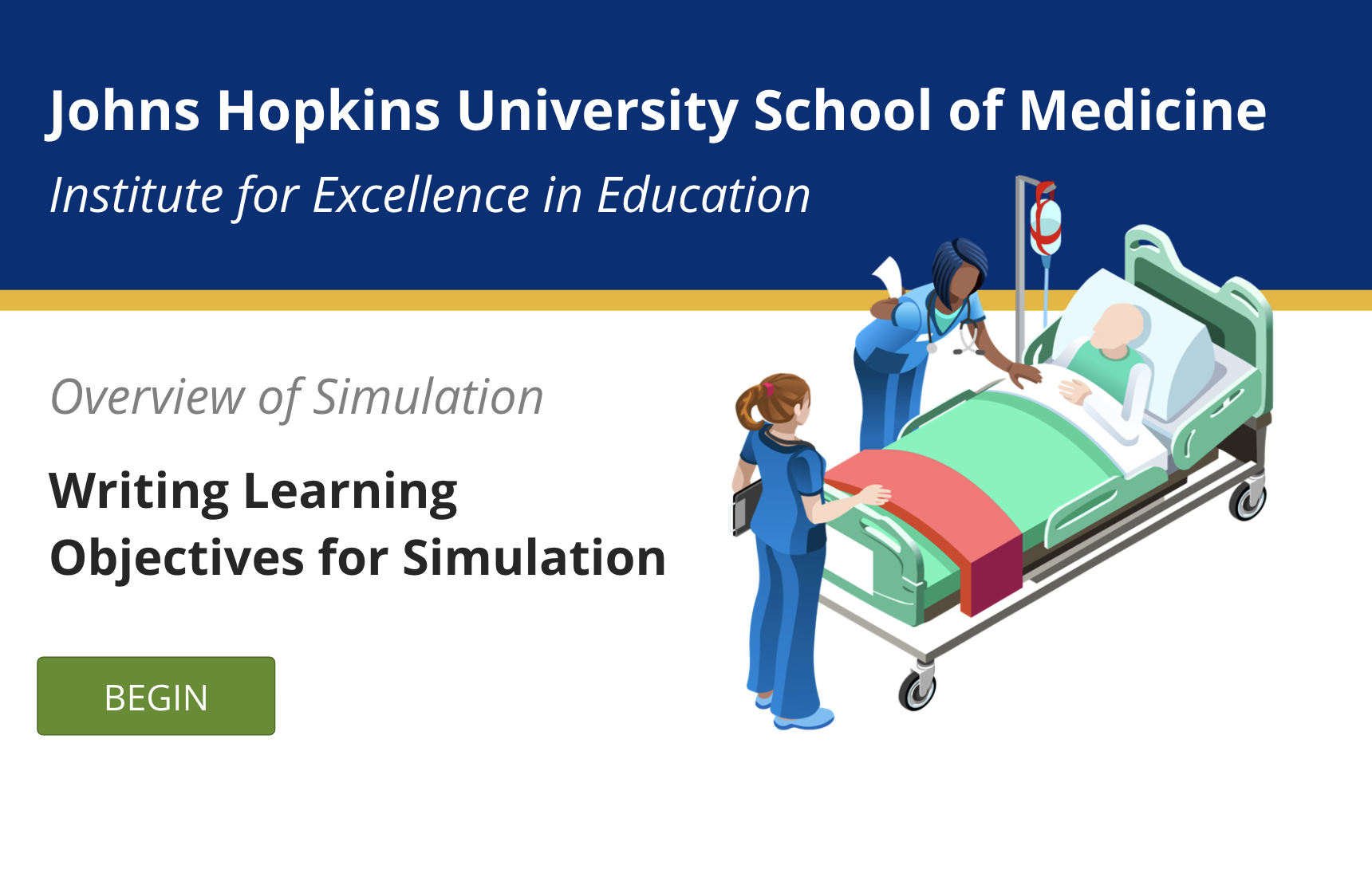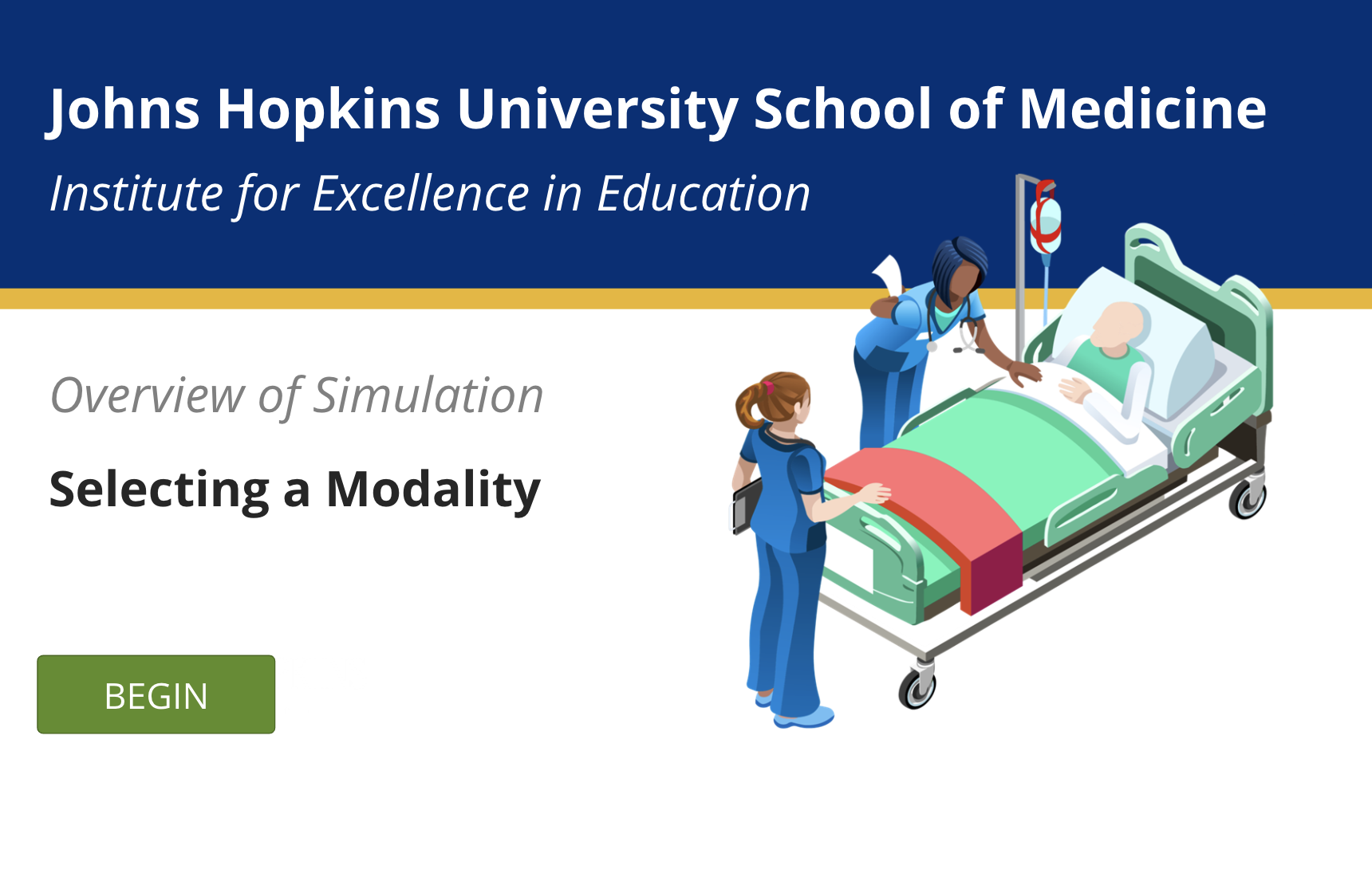Comments? Contact IEE.
1. Objectives
Describe the clinical and pedagogical rationales for simulation-based education
List situations in which simulation may be the most effecitve teaching method
Write educational objectives that fulfill the “ABCD” and “SMART” criteria
Identify the most appropriate simulation modality for attaining a variety of different learning objectives
2. Preparation in Advance
- What are some of the most essential knowledge, skills, and attitudes that learners in my department/program need to ensure safe, effective, and patient-centered care?
- What are some of the ways I have seen simulation used effectively in healthcare training? What was it that made it so effective?
3. The Module: Overview of Simulation Training
4. Application of the Module
Select an essential clinical problem or skill that learners that would be optimally taught using simulation. Create goals and objectives for the scenario, using the ABCD and/or SMART Objectives tool.
5. Next Steps and Coaching
6. Summary Points
- There are various modalities of sim
- Long history in healthcare education
- Many compelling reasons to use sim
- Several benefits for patients and learners
- Aligns well with adult learning theories
About the Author
 Julianna Jung, M.D.
Julianna Jung, M.D.
Director of Innovation in Medical Education, Johns Hopkins University School of Medicine
Associate Director, Johns Hopkins Medicine Simulation Center
Associate Professor of Emergency Medicine



